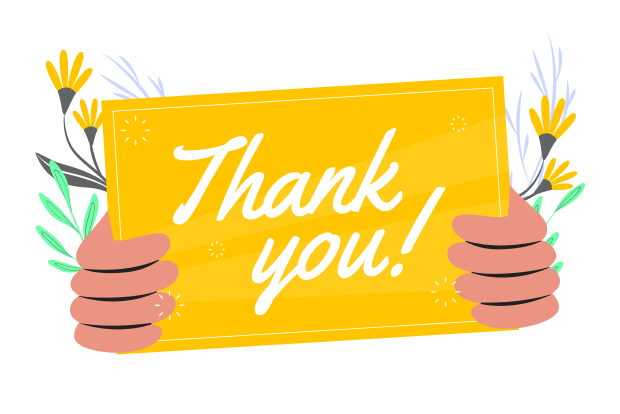Virtual Tours vs. In-person Viewings: What Middle East Buyers Prefer (2026)

By Jalaj Shah
October 13, 2025
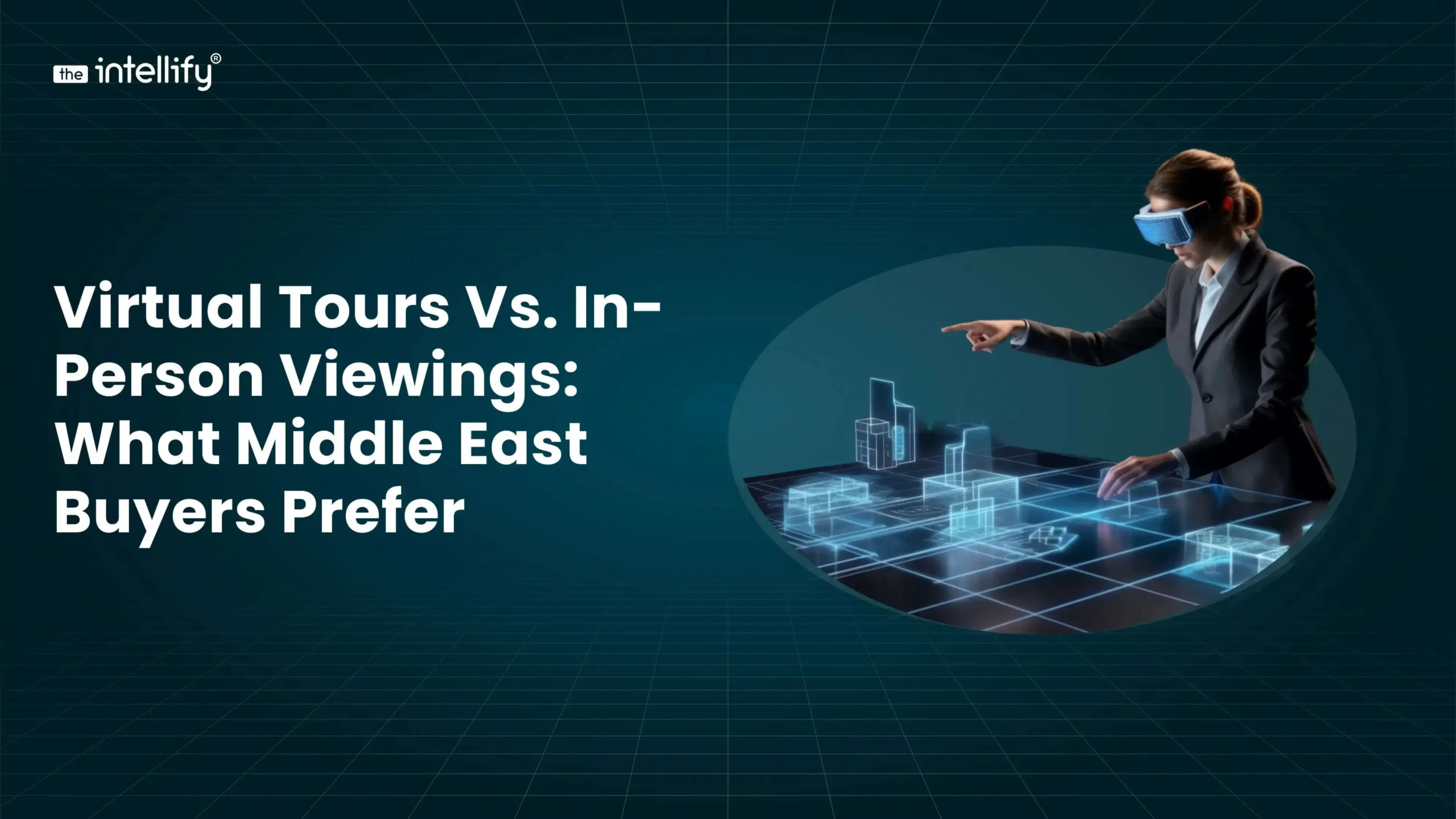
Summary
In 2026, immersive virtual tours are a baseline expectation across Gulf property listings: they extend reach, qualify higher-quality leads, and shorten time to offer. In-person viewings remain essential for tactile verification and closing premium purchases. The most effective teams apply a virtual-first, trust-aware approach: use virtual assets to inform and qualify, then deploy tightly scoped in-person visits to validate and close. This article gives an operational playbook, vendor checklist, booking and visit scripts, and measurable KPIs you can implement now.
Introduction: Why this comparison matters now
Real estate in the Middle East has undergone rapid changes. Rising international investment, widespread off-plan development, and a mobile-first buyer base mean listings must perform online before they perform in person. Buyers are busy and often remote; they expect clear visuals, accurate documents, and fast scheduling. This puts pressure on agents and developers to deliver professional virtual experiences while retaining the trust-building power of in-person viewings.
The most practical answer is not “virtual replaces physical” or “physical replaces virtual.” It is a disciplined hybrid model that uses virtual tours to widen the funnel and in-person visits to remove final risk and close deals. Below is a refined, actionable guide you can apply immediately.
How Middle East buyers decide in 2026
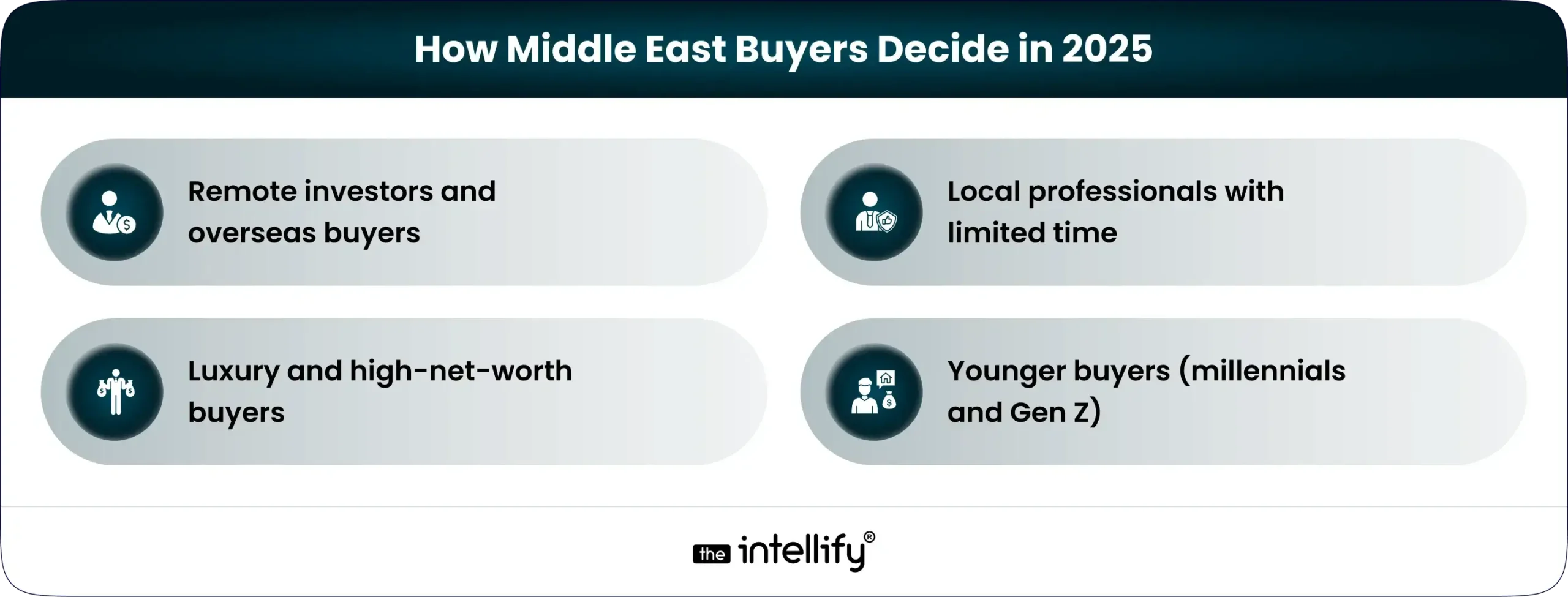
Buyer intent now clusters into four distinct groups, each of which requires a specific operational approach:
- Remote investors and overseas buyers. These buyers shortlist from afar and rely on 3D walkthroughs, accurate floor plans, neighbourhood videos, and clear documentation. A guided virtual tour can replace initial travel and, in many cases, lead directly to offers or targeted physical inspections.
- Local professionals with limited time. Research often happens after work. They expect to validate fit quickly online and will book one or two targeted viewings only if the virtual presentation confirms suitability. Speed and accuracy matter most for this segment.
- Luxury and high-net-worth buyers. Virtual assets narrow options, but tactile verification of finishes, acoustics, sightlines, and service expectations remains crucial. These buyers typically require curated, private in-person visits before signing.
- Younger buyers (millennials and Gen Z). Comfortable with technology, many are willing to buy sight-unseen when presented with high-quality visual proof and reliable documentation.
Measurable advantages of virtual tours
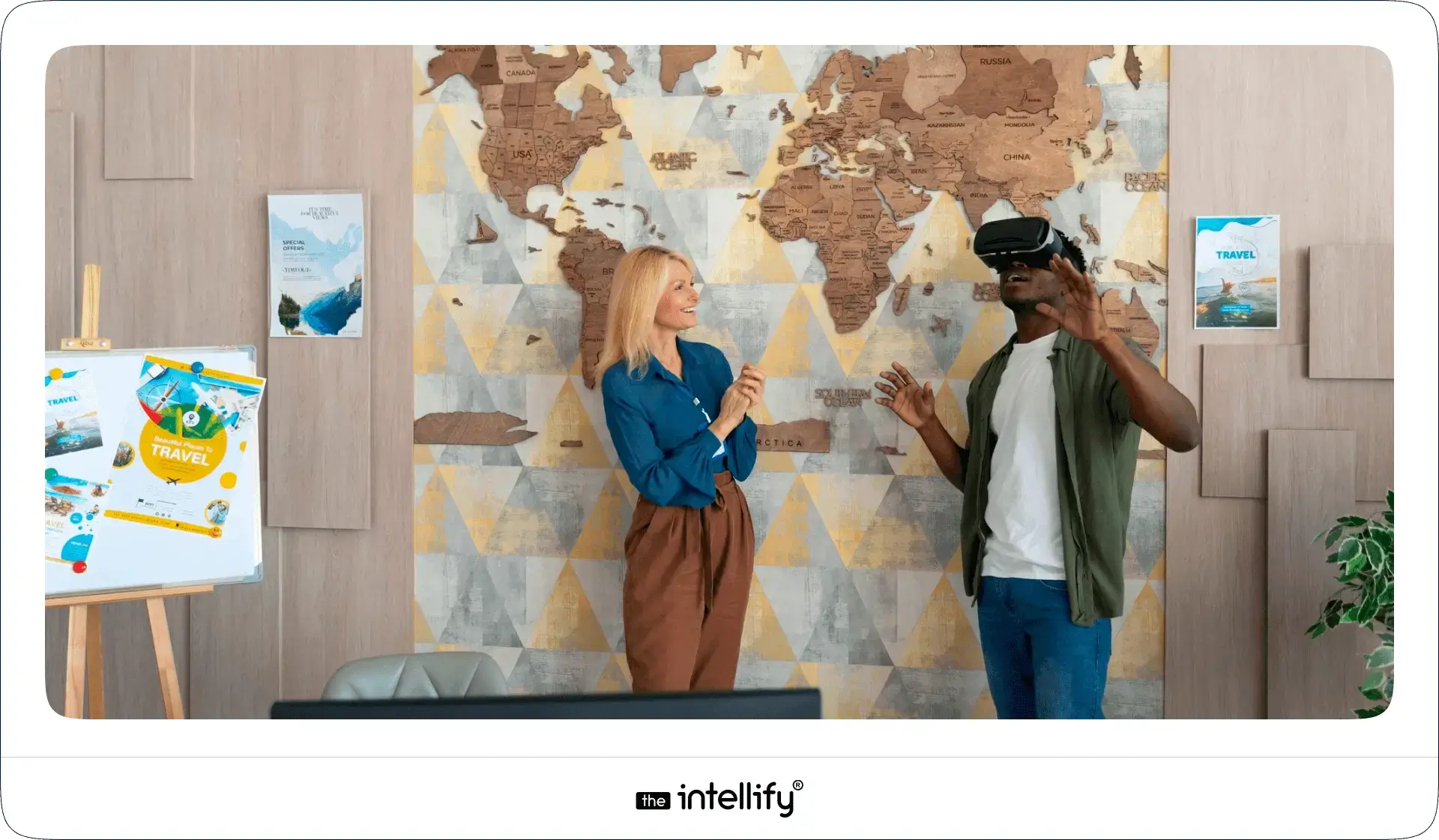
When executed consistently, virtual tours yield operational benefits that translate to faster sales and higher seller confidence:
- Higher lead quality. Immersive listings set realistic expectations; prospects who complete tours are more likely to contact the agent with intent.
- Faster qualification. Agents spend less time on low-probability visits because mismatches are revealed earlier in the funnel.
- Increased geographic reach. Overseas and cross-city buyers can evaluate more properties in less time, increasing the buyer pool.
- Reusable marketing assets. Tours power social campaigns, email sequences, and downloadable brochures that typically convert better than static photos.
These outcomes are repeatable when you standardize capture, publish quickly, and track the right metrics.
Why in-person viewings remain indispensable
Virtual tools are powerful, but they do not replace everything. Keep these reasons in mind:
- Physical verification. Materials, finish quality, ambient noise, and unobstructed sightlines are best judged in person. For premium homes, tactile experience is expected.
- Legal and technical needs. Measurements, title verification, and final contract signings often require local presence or certified documentation.
- Negotiation psychology. On-site meetings enable agents to read objections, create urgency, and manage closing dynamics in ways a virtual tour cannot.
The objective is to reduce unnecessary in-person visits while reserving them for moments where they materially reduce buyer risk and increase conversion probability.
A Refined Hybrid Playbook & Practical: Step-by-Step
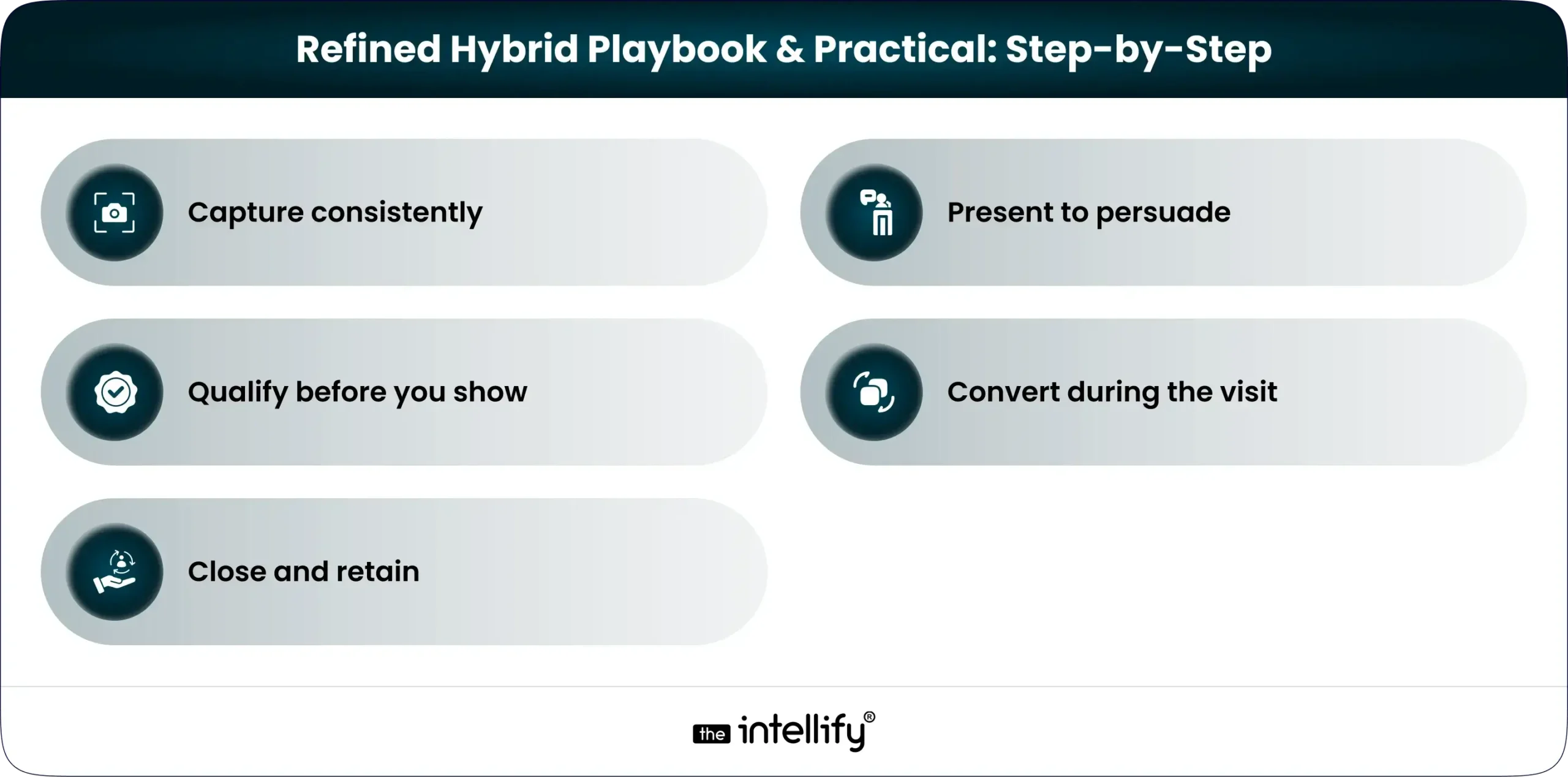
Phase 1: Capture consistently
- Standard checklist: 3D scan (Matterport or equivalent) or high-quality 360° capture, a short hosted walkthrough video, accurate floor plans with measurements, high-resolution photography, and a downloadable dossier containing title, warranty, and finish schedules. Consistency signals professionalism.
- Quality control: Use a capture checklist to ensure lighting, decluttered interiors, and consistent shot sequencing.
- Speed to market: Publish virtual assets within 48–72 hours of capture to maintain listing momentum and enable timely promotion.
Phase 2: Present to persuade
- Hero placement: Put the tour at the top of the property page and include a concise hosted video that highlights the five strongest selling points.
- Contextual content: Provide neighborhood map, commute times, schools, and recent comparable sales to reduce common objections.
- Clear booking options: Offer two frictionless CTAs: “Book a 15-minute Guided Virtual Tour” and “Schedule a Private In-Person Visit.”
Phase 3: Qualify before you show.
- Smart booking form: Capture three essentials at booking, budget range, intended timeline, and investor vs occupant to triage visits.
- Remote checks: Offer live guided video calls for overseas buyers to answer bespoke questions and reduce unnecessary travel.
Phase 4: Convert during the visit.
- Prepare a physical packet: Provide warranty documents, finish samples, measurement sheets, and a short checklist matched to buyer concerns.
- Focus on validation: Use in-person time to confirm remaining uncertainties rather than re-present basics already covered virtually.
Phase 5: Close and retain
- Digital handover pack: After sale, deliver finalized scans, manuals, warranty documents, and a neighborhood welcome guide electronically.
- Capture proof: Collect a short testimonial and permission to publish a concise metric (days to offer, % of virtual-origin leads).
- Automated nurture: Use CRM automation to follow up on referrals, upgrades, and post-move support.
Strategies embedded in presentation and content
Integrate practical strategies into every listing and distribution channel to boost discoverability and trust without turning pages into sales brochures.
- User-first headlines: Lead with buyer intent in one line. Example: “Explore this 2-bed Dubai Marina apartment full 3D tour available.”
- 10-second summary: Ensure price, size, bedrooms, and the primary CTA are visible within a single screen without scrolling.
- Short, shareable assets: Offer a two-page PDF (floorplan + key facts) for quick sharing rather than a long brochure.
- Micro-case studies: Publish one-paragraph case studies showing a single metric to build credibility.
- Mobile-first performance: Optimize tour embeds and media for fast mobile loading; speed is perceived as professionalism.
These approaches help listings get found, trusted, and shared.
What leading portals and brokers do and what to copy
Top regional players consistently apply three pillars you should emulate:
- Research-driven content: Publish market digests and repurpose them into short assets to earn backlinks and build authority.
- Hyperlocal pages: Create community landing pages and virtual-tour landing pages for key submarkets to capture search intent.
- Product integration: Surface “virtual tour available” badges, add live booking widgets, and offer promoted placements for tour-enabled listings.
Implement these systematically: standardize your asset library, localize copy, and make booking effortless.
Technology and vendor checklist: Practical selection criteria
Choose vendors and platforms with these capabilities:
- Capture tech: Support for 3D scans, 360° capture, and guided video walkthroughs. For premium properties, consider LIDAR.
- Embed and lead capture: The player must be mobile responsive, easily embeddable, and include lead capture.
- CRM integration: Tour leads should flow automatically into CRM for instant follow-up and scoring.
- Analytics: Platform should report tour completion rate, average watch time, and conversion to contact and in-person booking.
- Support & SLAs: Prioritize vendors with quick processing and responsive support.
If analytics are limited at launch, at least capture completion and time-on-tour metrics for manual tracking.
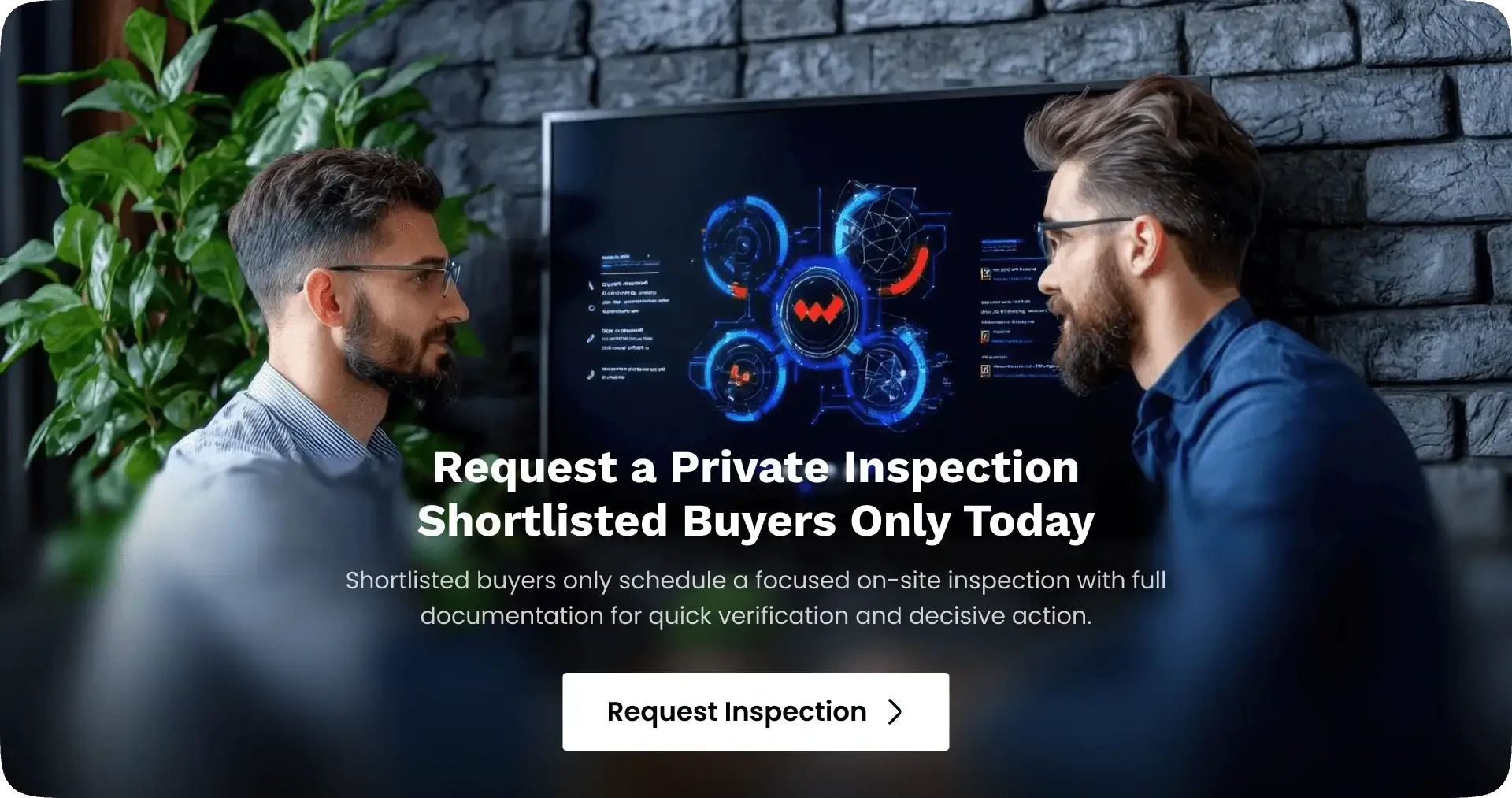
Page layout and conversion copy that works
Structure property pages to answer buyer questions by priority and reduce friction.
- Hero: a single-line value proposition and immediate CTA (“View 3D Tour / Book Guided Tour”).
- Snapshot: price, bedrooms, size, completion status, and one immediate selling point.
- Virtual tour embed: prominent, with a short hosted highlight video.
- What you’ll love: three short lifestyle bullets (commute, schools, view).
- Practical facts: floorplan, measurements, parking, service charges.
- Neighborhood map: travel times and key amenities.
- Short FAQ: concise answers to inspection and offer questions.
- Booking CTAs: two clear CTAs for guided virtual viewing and in-person visit.
- Proof: a short case study or seller testimonial with a single metric.
- Final CTA: time-boxed incentive (“Private inspections available this week, book now”).
Keep copy short, factual, and benefit-focused; remove marketing fluff.
Operational details: Scripts, KPIs, and compliance
Sample agent script for a guided virtual tour
- Greeting (15–30s): “Hello, I’m [Name], your local property expert. I’ll guide you through the apartment and answer questions as we go.”
- Orientation (30s): State the building, floor level, and primary view orientation.
- Highlight loop (2–3 mins): Point out three selling features: layout flow, natural light, storage, and tie each to buyer benefits.
- CTA (30s): “If this looks suitable, we can schedule a private inspection this week, or I can send the full measurement sheet and warranty documents now.”
KPIs to monitor
- Tour publish lead time: publish within 48–72 hours (target: 90% of listings).
- Tour completion rate: % viewers who view at least 50% of the tour (target: 35–50%).
- Contact after tour: % of tour viewers who contact the agent (target: 5–12%).
- Conversion to in-person booking: % of contacts who schedule a visit (target: 30–40%).
- Time to first offer: median days from listing to offer track and improve.
Sample capture checklist (detailed)
- Exterior approach: entrance, lobby, amenities.
- Living areas: multiple angles, balcony flow, and lighting.
- Kitchen: cabinets, appliances, finishes.
- Bedrooms: storage and sightlines.
- Bathrooms: fixtures, tiling, ventilation.
- Outdoor spaces: balcony depth, orientation, views.
- Utility & parking: allocated spaces and access.
- Documentation: brief capture of title page, service charge summary, warranty docs.
Common buyer objections and concise responses
- “I can’t tell material quality from a video.” “I’ll send close-up photos and warranty details; we can schedule a private inspection for finishes you want to verify.”
- “Is the view exactly like in the tour?” “The tour was captured on [date]; I’ll send a current photo, and we can do a live video at the time that shows the view you care about.”
- “How fast can I inspect in person?” “Shortlisted buyers typically get inspection slots within 48–72 hours; I’ll prioritize your slot.”
Legal and compliance reminders
- Ensure virtual representations are accurate and include a capture-date disclaimer and virtual-staging notes.
- For off-plan sales, state assumptions used in visualizations and link to approved finish specifications.
- Keep an audit trail of tour links and distribution for dispute resolution.
Distribution and amplification playbook
Treat distribution as part of the launch checklist:
- Email: segmented blasts (investors, owner-occupiers, city lists) with a single CTA to view the tour.
- Social: 15–30s highlight reels plus short fact cards for story formats.
- Partner channels: syndicate to portals and proptech partners; use promoted placements for tour-enabled listings.
- Paid tests: run small paid campaigns optimized for tour completion, not just clicks.
Example metrics report (one-pager)
- Listings published with virtual tours this month: 24
- Average time to publish tour: 62 hours
- Average tour completion rate: 41%
- Leads sourced from tours: 128 (≈10% of viewers)
- In-person visits booked from tour leads: 42
- Offers received from tour-origin leads: 11
Update this one-pager weekly during rollout to iterate on capture thresholds and promotional tactics.
Rollout timeline implemented in six weeks
Week 1: Create a capture checklist and run pilot captures.
Week 2: batch capture priority listings and publish landing pages.
Week 3: integrate tour analytics with CRM and launch social creative.
Week 4: A/B test CTAs and booking flows; refine copy.
Week 5: review performance metrics and optimize.
Week 6: publish a case study and scale capture.

Conclusion: What wins in 2026
In 2026, teams that treat virtual tours and in-person viewings as a single, coherent funnel will win. Virtual assets broaden reach and speed qualification; in-person visits close the trust gap. Execute consistent capture, present assets clearly, qualify before you show, and reserve in-person visits for validation and closing. The result: shorter sales cycles, stronger seller pitches, and higher conversion.
High Demand FAQs
-
What is a virtual property tour, and how accurate is it?
A virtual property tour is an interactive 3D or 360° walkthrough that shows layout, flow, and sightlines. It reliably represents space and orientation, but final tactile checks (materials, noise, odour) should be done in person for high-value purchases.
-
Can I make an offer after viewing a property virtually?
Yes, many buyers, especially overseas investors, make offers following a guided virtual tour. Best practice is to do a final in-person verification or live video inspection before completing legal closing steps.
-
How soon can a virtual tour be created and published?
For most apartments and standard homes, professional capture, processing, and publishing typically take 48–72 hours. Premium scanning (LIDAR or large villas) may take longer depending on vendor capacity.
-
Do virtual tours show exact measurements and floor plans?
Quality virtual tours include accurate floor plans and measurement overlays when produced with professional scanners. Always request the measurement sheet and, if required, a certified measurement before finalizing a purchase.
-
Are virtual tours mobile-friendly and easy to share?
Yes, top platforms deliver responsive embeds and lightweight players designed for mobile and desktop, and tours can be shared via direct links or included in short, downloadable PDFs for easy distribution.
-
What types of properties work best for virtual tours?
Virtual tours are effective for apartments, villas, off-plan show suites, and model homes. They are particularly useful for off-plan marketing and for buyers who are remote or time-constrained.
-
What are the typical costs for producing a professional virtual tour?
Costs vary by property size and capture method: basic 360° tours are economical, while high-fidelity 3D/LIDAR scans cost more. Consider ROI, faster sales, and higher-quality leads often justify professional capture.
-
Will virtual staging mislead buyers?
Virtual staging can help buyers visualise a space, but it must be disclosed clearly. Always show an option to view raw, unstaged imagery and include a disclosure when virtual furniture or finishes are applied.
-
How does a hybrid virtual-first + in-person process speed up sales?
Virtual-first screening reduces low-quality visits and shortlists motivated buyers. In-person visits are reserved for final validation, which shortens the sales cycle and improves agent efficiency.
-
What legal or compliance considerations apply to virtual listings?
Ensure all virtual representations are dated and accurate; include capture-date disclaimers and note any virtual staging or off-plan assumptions. For off-plan sales, link to approved finish schedules and developer documentation.

Written By, Jalaj Shah
The COO and Co-Founder of The Intellify. Jalaj enjoys experimenting with new strategies. His posts are fantastic for businesses seeking innovative development ideas. Discover practical insights from his engaging content.
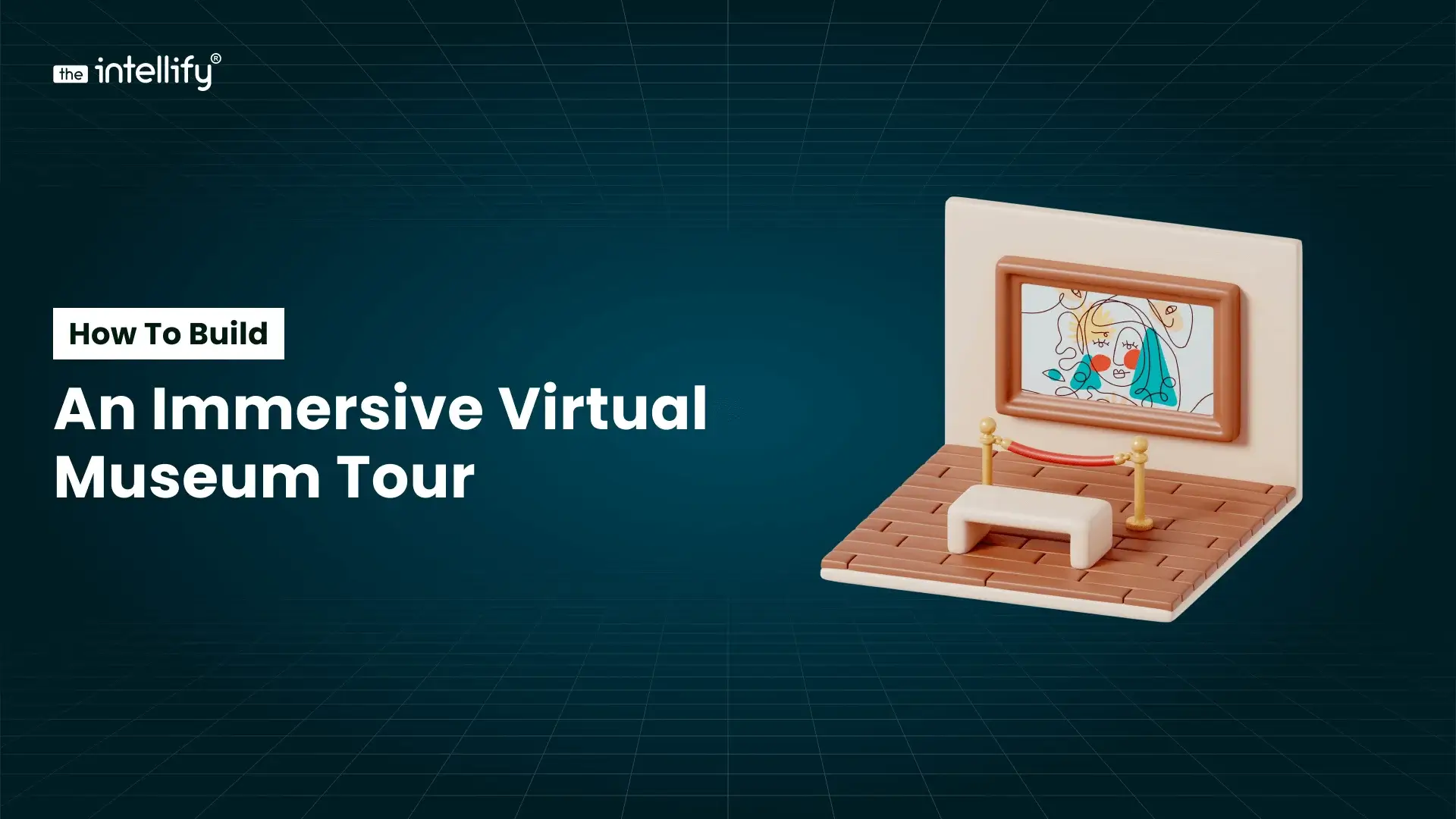

How to Build an Immersive Virtual Museum Tour in 2026
Summary: This blog explains how to create a virtual museum tour in 2026, covering everything from choosing the right tour format to planning layouts, capturing 360° or 3D visuals, adding interactive elements, and integrating AR/VR. It also highlights the key features that make a virtual museum experience successful, the technology stack you’ll need, estimated development […]
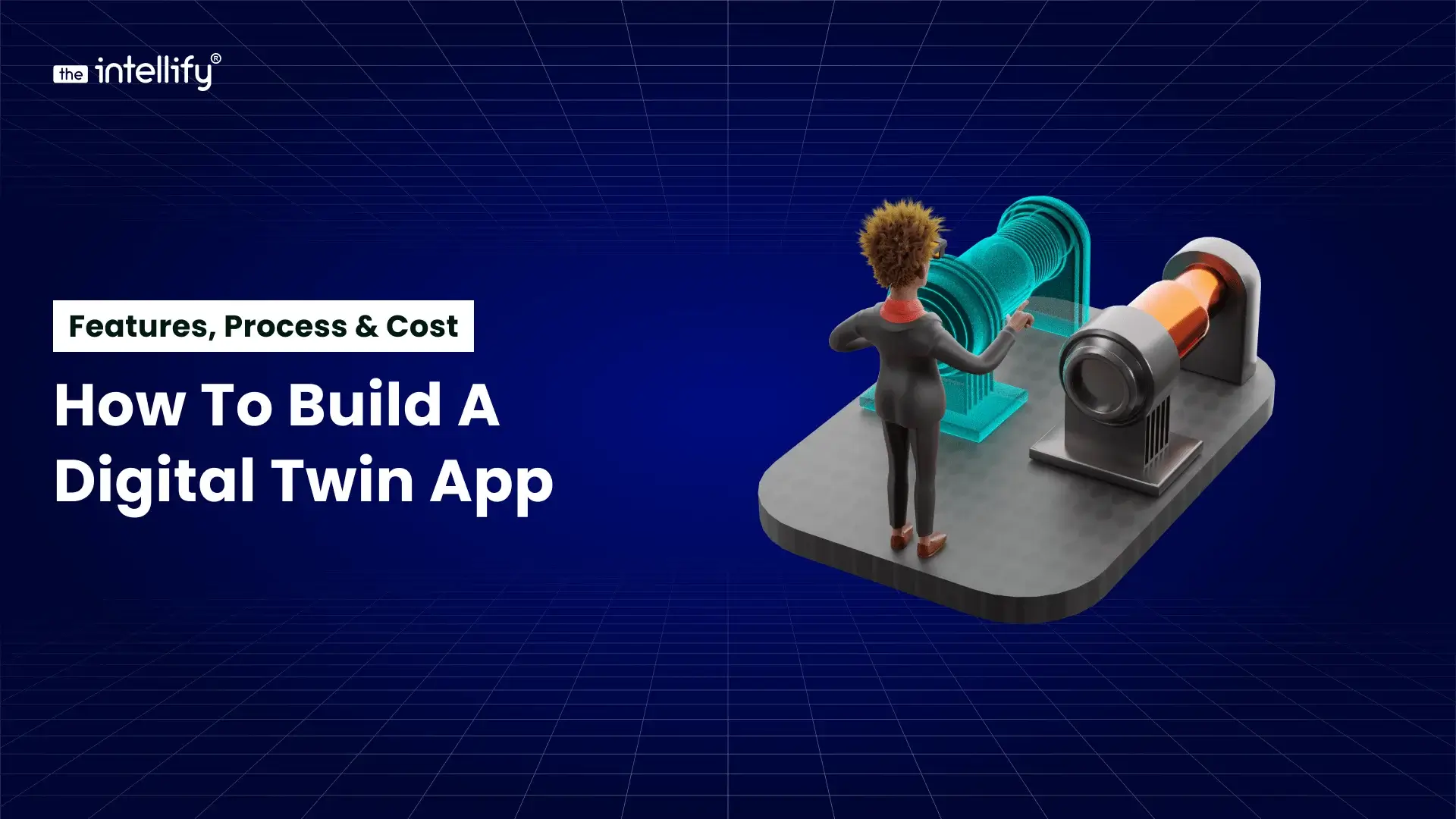

How to Build a Digital Twin App: Features, Process & Cost
Summary: A digital twin app creates a real-time virtual model of a physical asset, which helps businesses monitor performance, predict failures, and make smarter decisions. This blog explains what digital twin apps are, how they work, their key features, and the step-by-step development process. It also covers cost, timelines, challenges, and real industry use cases. […]
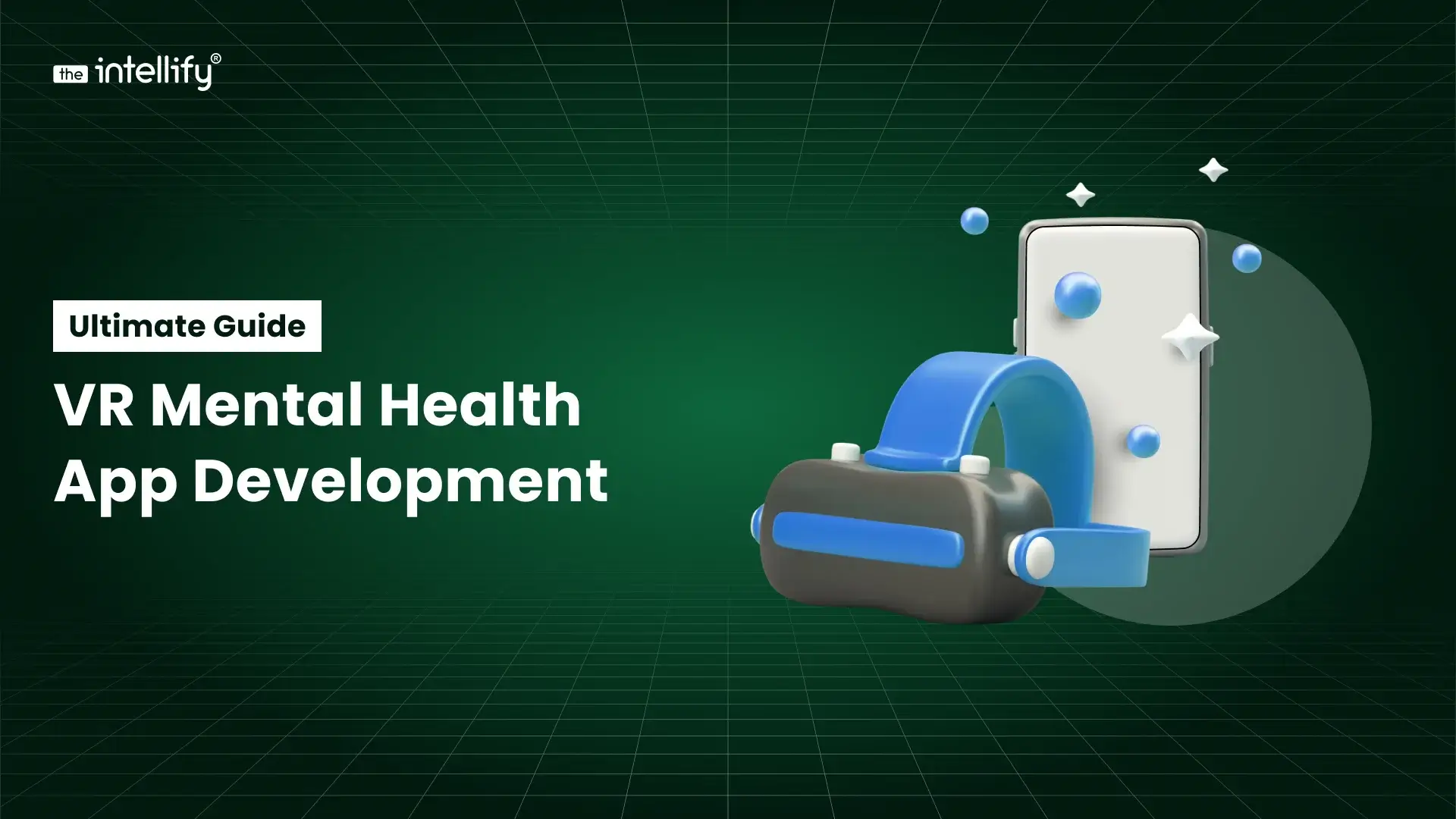

VR Mental Health App Development: Ultimate Guide 2026
Summary: This guide breaks down the essentials of VR mental health app development in a simple, human way. It explains how VR creates safe, immersive spaces for people dealing with anxiety, stress, depression, ADHD, and more. You’ll learn about real use cases, key features, the tech stack, development steps, costs, and what the future of […]


How to Build an Immersive Virtual Museum Tour in 2026
Summary: This blog explains how to create a virtual museum tour in 2026, covering everything from choosing the right tour format to planning layouts, capturing 360° or 3D visuals, adding interactive elements, and integrating AR/VR. It also highlights the key features that make a virtual museum experience successful, the technology stack you’ll need, estimated development […]


VR Mental Health App Development: Ultimate Guide 2026
Summary: This guide breaks down the essentials of VR mental health app development in a simple, human way. It explains how VR creates safe, immersive spaces for people dealing with anxiety, stress, depression, ADHD, and more. You’ll learn about real use cases, key features, the tech stack, development steps, costs, and what the future of […]
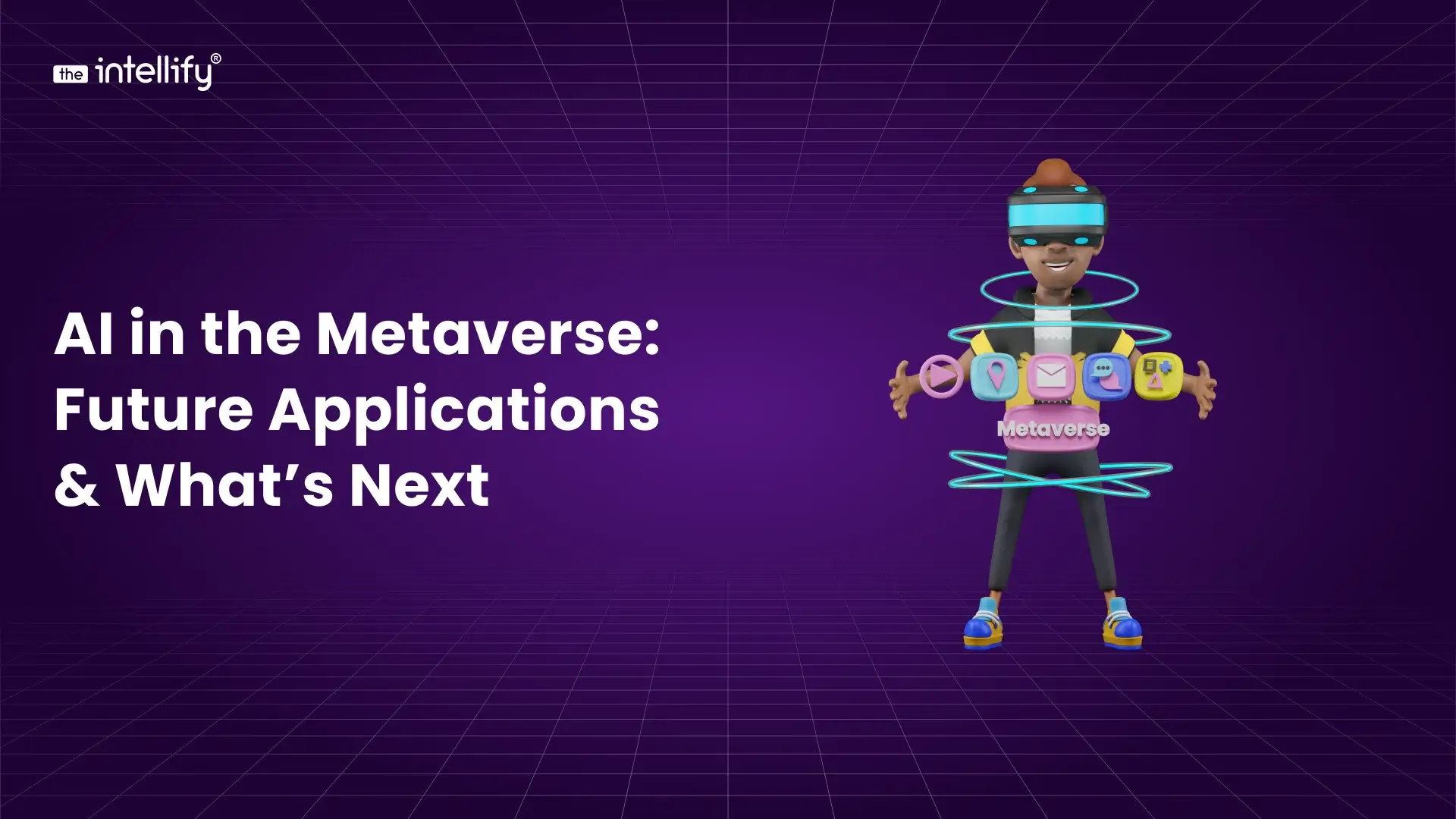

AI in the Metaverse: Future Applications & What’s Next
Summary: This blog explores how AI in the metaverse is slowly reshaping the way we interact with digital spaces. It breaks down how AI personalizes virtual worlds, improves navigation, and makes avatars, environments, and conversations feel more lifelike. You’ll also find practical tips on getting started, plus a look at what the future may hold […]
0
+0
+0
+0
+Committed Delivery Leads To Client Satisfaction
Client Testimonials that keep our expert's spirits highly motivated to deliver extraordinary solutions.

















